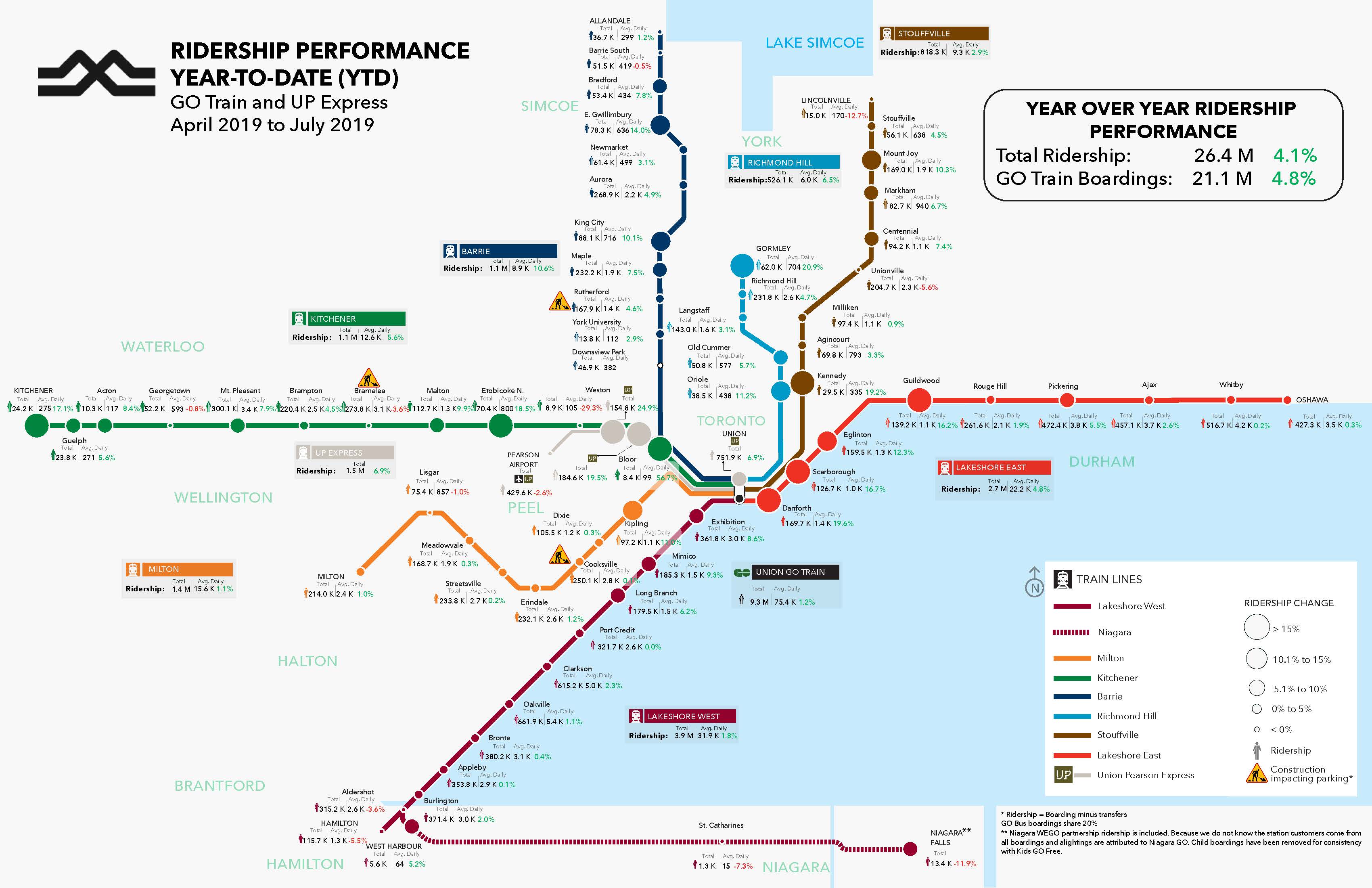GO Transit ridership map – update sees bump in GO Train rides
New data finds increase in lower fares for shorter trips as well as increase on all lines.
Sep 9, 2019
If you’re a regular GO train customer, look to the seats around you – apparently your neighbours are following your lead.
Ridership across GO Transit’s rail system continues to grow, with new data pointing to a noticeable increase in customers using the trains for short trips.
Lower fares for shorter trips took effect on April 20, including a price cut to $3.70 for rides of approximately 10 km or less.
CLICK HERE TO VIEW THE DETAILED MAP
The figures are included in an updated map showing GO train and UP Express stops across the Greater Horseshoe region. Compared to the same period last year – April to July – 2019 saw total GO Transit ridership increase by 4.1 per cent, along with the number of overall GO train boardings (4.8 per cent).
The latest ridership map is showing a healthy jump in ridership on the rail corridors.
The results show growth at Toronto stations, helping with public transit options within Canada’s largest city, including short trips to destinations such as Danforth (19.6 per cent more users), Scarborough (a 16.7 per cent bump), Kipling (11 per cent) and Mimico (up 9.3 per cent).
“The combination of the effective partnership and marketing campaigns, increases in off-peak service, events, and pricing changes have contributed to the continued growth across the network,” said Mark Childs, chief marketing officer for Metrolinx.
On the major rail routes, the Kitchener Line saw a 5.6 per cent increase in users – even before recently announced service increases. The Barrie Line saw the biggest spike in growth (10.6 per cent) – in particular, off-peak ridership.
In fact, all of the major lines saw more riders taking GO trains than ever before.
A child looks out of the window of an UP Express train. Metrolinx has released an updated map that charts passenger use. Photo by Matt Llewellyn
“This quarter also saw particularly strong growth at those stations close to Union Station compared to this quarter last year,” Childs said. “This growth could be attributed to the lower fare of customers going from these stations to Union Station and back.”
However, Weston Station saw a drop in the reported number of average daily riders due to a change in how customers now tap on using PRESTO. Weston, like Bloor Station, is a connection to UP Express. Officials have now improved how customers are directed to the correct device, which has improved accuracy of the numbers.
The UP Express stop at Pearson International Airport reported a 3.6 per cent decrease from last year. That’s due to a large 2018 conference that drew in unusually high numbers of customers.
Drilling deeper down into the numbers, there were a number of standout stars, including East Gwillimbury Station, with 14 per cent more passengers using the stop.
A number of GO Transit partnerships and special events helped attract more riders onto the system. For example, 2019 saw a 71 per cent increase in ridership for Honda Indy versus the 2018 race week, and Pride weekend also saw more boardings. As well, the June 17 Raptors NBA championship parade saw a 33 per cent rise in users on GO Transit and UP Express.
So if you’re that GO Transit regular, say ‘hello’ to your neighbours, who now seem to be joining you onboard.
And to see how the customer map has changed – and compare the increase on your own platform or station – click here to see the last time numbers were released.
